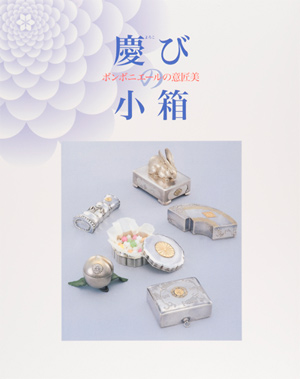| image | information |
|---|---|
 |
Bonbonnière is the French word for a small container for bonbons. In Europe, bonbons are sometimes presented at celebrations like the birth of a child or a wedding, as small gifts that will enhance the joyousness of the event. The Japanese Imperial Family, too, has come to follow this custom in the modern era, using small containers filled with candy as gifts on such occasions. These bonbonnières seem to have first come into use around the time of the banquet celebrating the twenty-fifth wedding anniversary of Emperor Meiji in 1894. Thereafter, bonbonnières of various elaborate designs have been produced for auspicious occasions such as the enthronement of the Emperor, the investiture of the Crown Prince, the birth of a child in the Imperial Family, the child’s donning-of-the-hakama ceremony at the age of five, the coming-of-age ceremony, and marriage. They have been made as well as for banquets commemorating such events as members of the Imperial Family embarking on overseas visits. While most of the bonbonnières are made of silver, some have additionally used cloisonné, while still others are made of lacquer on wood, ceramics, or bamboo. This exhibition introduces approximately 150 bonbonnières redolent with both charm and beauty. Selected have been works dating mostly from before or during the early Showa era, presenting an especially wide variety of designs and techniques. Bonbonnières are being given as accompaniment to celebratory occasions in the Imperial Family even today, and by examining their changes over time and their designs, this exhibition seeks to introduce one aspect of the arts and crafts surrounding Imperial celebrations. We hope that the viewer will take this opportunity to enjoy the aesthetic beauty of the bonbonnière. |